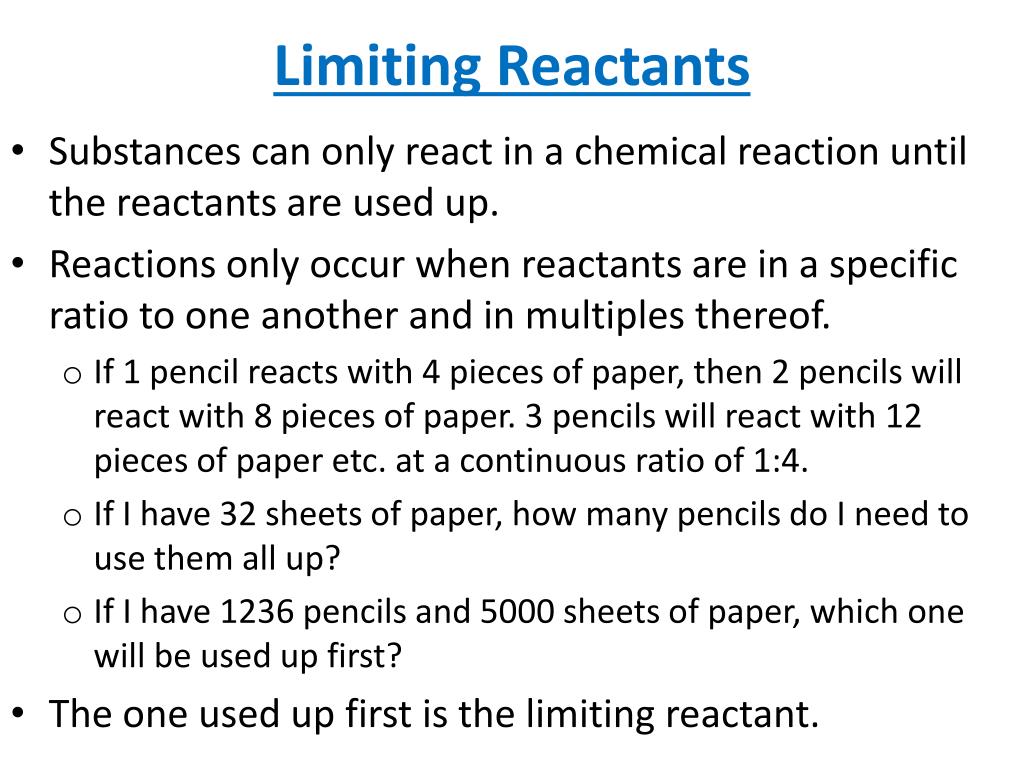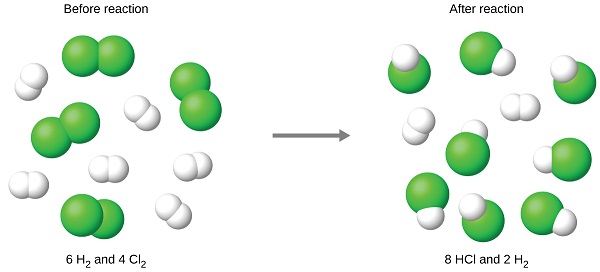In the reaction Na will produce a lesser amount of Na 2 O than O 2 will therefore Na is the limiting reactant. The reactant that produces a smaller amount of product is the limiting reactant.

What Is The Chemical Formula For The Limiting Reactant In The Reaction Shown Write The Balanced Brainly Com
One of the simplest and easiest ways for identifying a limiting reactant is to compare how much of the product each reactant will be producing.

How to write a chemical formula for a limiting reactant. H 2NO N H0 Write the balanced chemical equation for the reaction using lowest whole-number coefficients. Therefore 3 L 3224 01339 moles. Convert mass to moles and stoichiometry.
It requires 1 x 012 005 moles of chlorine. C What is the maximum number of moles of AgCl that could be obtained from this mixture. 1 mole of chlorine gas 224 L at STP.
Just as in the previous method we start off with a balanced chemical equation and continue by determining the number of moles of each reactant. Hence Sodium metal is the limiting reactant. When the amount of reactant B is greater the reactant A is the limiting reagent.
Question 21 of 25. The Balanced equation is. 23052017 Calculating the Limiting Reactant In order to find the limiting reactant in chemistry you need a balanced equation or one where the number of atoms found on the reactant side is equal to the.
In an alternate method of finding the limiting agent the amount of product formed by each reactant. 4 mol C 2 H 3 Br 3 to 11 mol O 2 to 6 mol H 2 O to 6 mol Br. If the amount of B actually present exceeds the amount required then B is in excess and A is the limiting reagent.
23122018 There are two methods used to find the limiting reactant. Here the total number of atoms available at reactant side should be equal to the total number of atoms available at the product side. 05042016 Because 0556 moles of C 2 H 3 Br 3 required.
To find the limiting reagent in Chemistry you should form a balanced equation first. Atte 00 NOHO What is the chemical formula for the limiting reactant in the reaction shown. 4 NO5 H 2N2 4H01H Previous question Next question.
Divide the actual number of moles of each reactant by its stoichiometric coefficient in the balanced chemical equation. The first is to compare the actual mole ratio of the reactants to the mole ratio of the balanced chemical equation. Identify and recognize the limiting reactant if 543 moles of Na are reacting with 425 moles of O 2 in the following equation.
B Which reactant is the limiting reactant. Step 2 and Step 3. 0286 moles of C 2 H 3 Br 3 available C 2 H 3 Br 3 is the limiting reactant.
By comparing the amount of product produced by each reactant. Balance the chemical equation. The equation is already balanced with the relationship.
Now check the molecular weight of the compound that is generally given in grams. 2Na s Cl. Therefore by either method ceC2H3Br3 is the limiting reactant.
The reactant that yields the smallest mass of product is the limiting reactant. Finding the limiting reagent by looking at the number of moles of every reactant. When there are only two reactants write the balanced chemical equation and check the amount of reactant B required to react with reactant A.
Solution for What is the chemical formula for the limiting reactant in the reaction shown. Notice that the starting amount of Na is actually larger than the starting amount of O 2 but stoichiometry shows that Na will run out first. Identify the limiting reactant if 274 grams of H 2 reacts with 252 moles of O 2 in the following equation.
First determine the balanced chemical equation for the given chemical reaction. 09032021 Determine the number of moles of each reactant. A Write the chemical equation for the reaction.
The next step is to calculate the mole ratio from the given information. One reactant A is chosen and the balanced chemical equation is used to determine the amount of the other reactant B necessary to react with A. D What is the maximum number of grams of AgCl that could be obtained.
Then convert all the given information into moles by using molar mass as a conversion factor. но What is the chemical formula for the limiting reactant in the reaction shown. 23 g of sodium metal 23 23 01 mole.
Suppose you have the following chemical equation and you are asked to find the limiting reactant if the amount of sodium is 25g and that of chlorine is 40g. 01102020 Therefore oxygen is the limiting reactant and ammonia is available in excess. If the amount of B present is less than required then B is the limiting reagent.
4Na O 2 2Na 2 O Solution. Determine the limiting reagent and amount of excess reagent present if the mass of Na 23 and Cl 355. E How many grams of the reactant in excess will remain after the reaction is over.
The reactant which is in a lesser amount than is required by stoichiometry is the limiting reactant. The other method is to calculate the gram masses of the product resulting from each reactant. Use the balanced chemical equation to determine the mole ratio stoichiometric ratio of the reactants in the chemical reaction Compare the available moles of each reactant to the moles required for complete reaction using the mole ratio i The limiting reagent is the reactant that will be completely used up during the chemical reaction.

Stoichiometry Mass Changes In Chemical Reactions Limiting Reactants

Ppt Limiting Reactants Powerpoint Presentation Free Download Id 2568874

Answered Ho What Is The Chemical Formula For The Bartleby

Stoichiometry Limiting Excess Reactant Theoretical Percent Yield Chemistry Youtube
Limiting Reactants Chemistry 101
Limiting Reactant Read Chemistry Ck 12 Foundation

8 4 Limiting Reactant And Theoretical Yield Chemistry Libretexts




0 comments:
Post a Comment